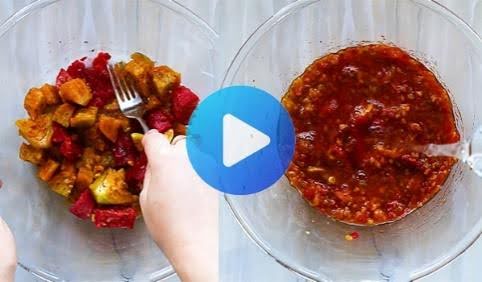Sometimes, gaining weight can feel like a challenge, especially if you’re underweight and trying to build a healthier, stronger body. I’ve learned that just like losing weight, gaining weight also takes a smart approach. It’s about adding the right foods to your meals, focusing on strength-building exercises, and being consistent in your efforts.
Here’s what I’ve found works best when it comes to weight increase tips, food choices, and lifestyle habits for females who want to gain weight in a healthy way.
Why Being Underweight Can Be a Problem
Being underweight isn’t just about looks; it can affect your energy levels, immune system, and even your hair and skin. When my body wasn’t getting enough nutrients, I noticed feeling tired more often and not being as strong as I wanted. That’s when I decided to look into ways to gain weight without sacrificing health.
Focus on Eating More Calories
To gain weight, I had to eat more calories than my body burned. But it’s not just about eating anything—it’s about choosing nutrient-dense foods that are packed with energy, vitamins, and minerals.
Add Calorie-Rich Foods
Here are some foods I found helpful:
- Nut butters: A spoonful of peanut or almond butter on toast is an easy way to pack in extra calories.
- Avocados: They’re creamy, delicious, and full of healthy fats.
- Cheese: Adding shredded cheese to meals can make them richer and tastier.
- Dried fruits: A handful of raisins, apricots, or dates can be a quick energy boost.
- Nuts and seeds: They’re crunchy, satisfying, and a great snack on the go.
Eat More Frequently
Eating smaller meals more often made it easier for me to hit my calorie goals. I’d start my day with a hearty breakfast, add snacks between meals, and enjoy a satisfying dinner followed by a bedtime snack.
Use Liquid Calories
Drinking my calories was a game-changer! I made smoothies with milk, protein powder, bananas, and peanut butter. Milkshakes and meal replacement drinks were also great for squeezing in extra calories.
Choose Protein to Build Muscle
Protein is super important if you’re working out and trying to gain weight. I made sure to include protein in every meal. Some of my favorite protein-rich foods are:
- Eggs
- Chicken and turkey
- Fish like salmon or tuna
- Beans and lentils
- Greek yogurt
If you’re like me and enjoy a good workout, especially strength training, protein helps repair and build muscle. That way, the weight you gain isn’t just fat but healthy, strong muscles.
Focus on Strength Training
When I started strength training, it made a big difference. Weightlifting and resistance exercises help build muscle, which not only adds to your weight but also makes you feel powerful.
Some of My Favorite Exercises:
- Squats: Great for toning and strengthening legs and glutes.
- Deadlifts: They work your entire body and make you feel strong.
- Push-ups: Perfect for building upper body strength.
- Pull-ups: Challenging but great for back and arm muscles.
- Lunges: Amazing for your legs and balance.
I made sure to gradually increase the weights I used and focused on proper form to avoid injuries.
Prioritize Healthy Fats
Healthy fats were my best friend when trying to gain weight. They’re calorie-dense and super nutritious. Some of the foods I loved including in my diet were:
- Olive oil drizzled on salads or pasta
- Fatty fish like salmon
- Whole milk and full-fat dairy
- Coconut milk in smoothies or curries
These foods made my meals tastier and gave my body the healthy fats it needed.
Stay Consistent
Consistency is key. I reminded myself that gaining weight wouldn’t happen overnight. I tracked my progress weekly, made adjustments to my eating and workout plans, and kept going even when the results were slow.
Avoid Skipping Meals
I used to skip meals when I wasn’t feeling hungry, but I learned to eat even if it was just a small snack. Preparing meals in advance helped me stick to my plan.
Watch for Hidden Calories
I added extra calories in sneaky ways that didn’t make me feel like I was overeating. For example:
- Mixing cream into coffee or tea
- Spreading butter on bread or crackers
- Adding honey or maple syrup to oatmeal
These little changes added up over time and made it easier to reach my calorie goals.
Keep Hydrated
Drinking water is important, but I also included other drinks that helped with weight gain. Whole milk, fruit juices, and coconut water were all great options. I avoided drinking too much water before meals since it could make me feel full faster.
Rest and Recover
Rest is just as important as eating and exercising. When I didn’t get enough sleep, my energy levels dropped, and it was harder to stick to my plan. Aim for 7–9 hours of sleep each night, and don’t forget to take rest days from workouts to let your body recover.
You Might Be Interested In: Learning more about The Complete Smoothie Detox & Weight Loss Program
Gaining weight in a healthy way is all about balance—eating more of the right foods, building muscle through exercise, and being patient with the process. It’s not just about reaching a number on the scale; it’s about feeling stronger and more confident in your own skin. Remember, every small change adds up, so start with one or two tips and build from there!
Dive Deeper Into Gaining Weight the Right Way
If you’ve already started with the basics of adding nutrient-dense foods, focusing on strength training, and building a consistent routine, you might be wondering what else you can do to make steady progress. Let me share some advanced tips and strategies that worked for me when I wanted to gain weight in a way that felt sustainable and healthy.
Understanding Your Calorie Needs
One of the first things I realized was that gaining weight isn’t a one-size-fits-all approach. Everyone’s calorie needs are different based on age, activity level, and metabolism. I started by figuring out my Total Daily Energy Expenditure (TDEE). This is the number of calories my body needs to maintain its current weight. From there, I added about 300–500 calories daily to create a calorie surplus.
How to Track Calories Without Stress
- Use a food diary: Writing down what I ate helped me spot patterns and ensure I was meeting my goals.
- Apps are your friend: Apps like MyFitnessPal made it easier to track calories and macronutrients.
- Focus on progress, not perfection: If I missed a day or overate one day, I didn’t beat myself up. Consistency over weeks matters more than a single day.
Timing Your Meals
When I started paying attention to when I ate, it made a big difference. Eating more frequently is great, but timing those meals around your day can make the process even smoother.
Pre-Workout and Post-Workout Nutrition
- Before workouts: A small meal with carbs and protein, like a banana with peanut butter or a yogurt parfait, gave me energy to power through my sessions.
- After workouts: This is when your muscles need protein and carbs to recover and grow. I loved having a smoothie with milk, protein powder, and frozen berries after lifting weights.
Spice Things Up in the Kitchen
Eating more can feel repetitive if you stick to the same meals, so I experimented with recipes that added flavor and variety to my plate.
Easy Meal Ideas for Weight Gain
- Breakfast bowls: I layered granola, full-fat yogurt, nuts, seeds, and honey for a quick, calorie-packed breakfast.
- Loaded wraps: Whole-grain wraps stuffed with hummus, grilled chicken, avocado, and shredded cheese were satisfying and easy to make.
- Pasta dishes: Adding cream-based sauces, olive oil, and grated cheese turned simple pasta into a calorie-rich meal.
Cooking became fun when I thought of it as a way to nourish my body and get creative with ingredients.
Incorporate More Healthy Snacks
Snacks were my secret weapon. Instead of sticking to three big meals, I included snacks throughout the day to boost my calorie intake without feeling stuffed.
My Go-To Snacks:
- Trail mix with dried fruits, nuts, and dark chocolate.
- Whole-grain crackers with cheese or guacamole.
- Hard-boiled eggs with a sprinkle of salt and pepper.
- Apple slices with almond butter.
- Protein bars (just check the labels for added sugars).
The Role of Supplements
Sometimes, I couldn’t meet my calorie or protein needs through food alone, so I turned to supplements for a little extra help.
What Worked for Me
- Protein powders: Whey protein or plant-based options like pea protein were easy to mix into smoothies or even oatmeal.
- Creatine: This supplement helped with muscle building and recovery after strength training.
- Meal replacement shakes: On busy days, these were a lifesaver to fill in nutritional gaps.
While supplements were helpful, I always prioritized real food as my main source of nutrients.
Stay Motivated with Progress Tracking
When I first started, I used to focus only on the number on the scale, but I quickly realized that there’s more to progress than weight alone.
How I Tracked Progress
- Take pictures: Weekly progress photos helped me see changes in my body that the scale couldn’t show.
- Measure strength gains: I celebrated every time I lifted heavier weights or did more reps.
- Body measurements: Keeping track of measurements like waist, hips, and arms showed me where I was gaining muscle.
This way, even when the scale didn’t budge, I could see and feel my progress in other ways.
Manage Stress and Sleep
I didn’t realize how much stress and sleep affected my ability to gain weight until I made a conscious effort to improve both.
Why Stress Matters
Stress can make it harder to eat enough, and it can even increase the hormones that break down muscle. To manage stress, I practiced deep breathing, went for walks, and took time to relax with hobbies like reading or drawing.
Why Sleep Matters
When I wasn’t sleeping enough, I felt hungrier but less motivated to eat well or work out. Getting 7–9 hours of quality sleep each night gave my body the rest it needed to grow and recover.
Avoid Common Pitfalls
I made mistakes along the way, but they taught me what not to do when trying to gain weight.
What to Watch Out For:
- Relying on junk food: It’s tempting to load up on chips, soda, and sweets, but these don’t provide the nutrients your body needs to build muscle or feel good.
- Skipping workouts: Muscle doesn’t grow on its own, so sticking to a consistent strength-training routine is key.
- Comparing yourself to others: Everyone’s body responds differently, so it’s important to focus on your own progress.
Make It Social
One thing that really helped me stay on track was involving friends or family in my journey. Sharing meals, cooking together, or even going to the gym with a buddy made the process more enjoyable and less isolating.
Fun Ways to Stay Social:
- Plan potluck dinners where everyone brings a healthy dish.
- Join a fitness class or gym that focuses on strength training.
- Share your favorite recipes or workout tips with others.
Embrace the Process
What I’ve learned through my weight-gain journey is that it’s not just about reaching a specific number—it’s about building habits that make you feel stronger, healthier, and more confident. Every small step, whether it’s eating an extra snack, lifting heavier weights, or simply taking better care of yourself, adds up over time.
Keep going, and remember that every meal, every workout, and every good night’s sleep is a step in the right direction. You’ve got this!







